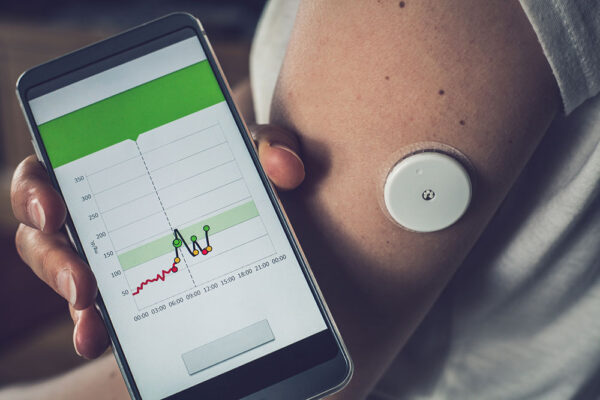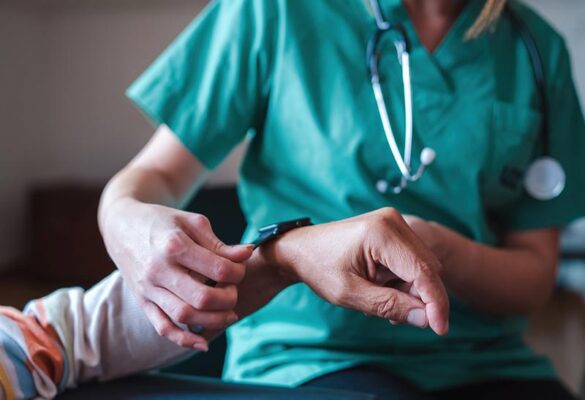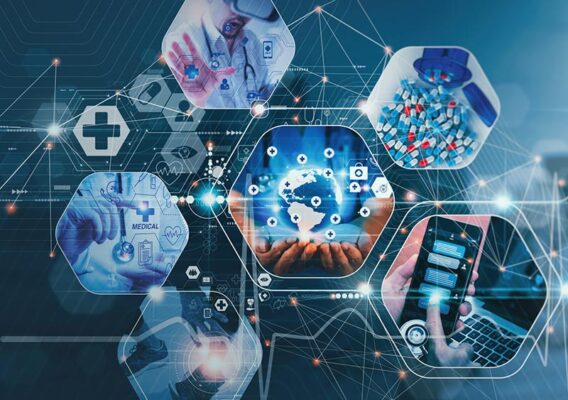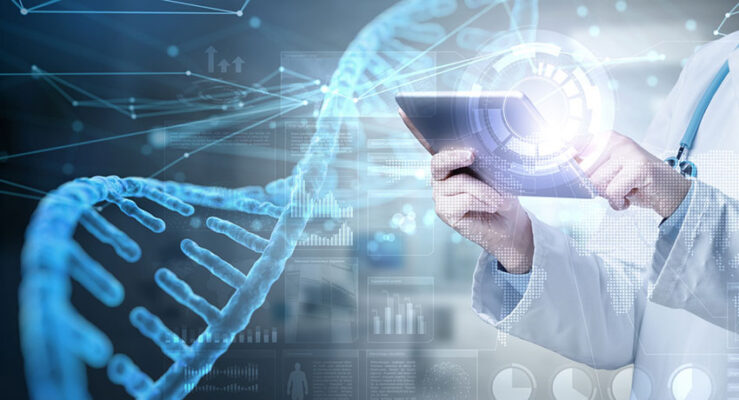A Guide to Connected Medical Devices
By Carsten Brockmann
October 13, 2023
Around one billion people worldwide suffer from sleep apnea. Health care professionals must monitor and manage diagnosed patients daily. For chronic health care cases like this, real-time data is critical for doctors to make informed decisions about patient care.

Connected medical devices offer significant treatment improvements that lead to better patient outcomes. The world’s largest medical equipment makers have developed cloud-connected devices for conditions like sleep apnea. Other devices can treat health conditions and diseases, including:
These devices also enable remote patient monitoring to improve medical outcomes. Procedures like cardiac implants leverage dozens of communication modules. They provide continuous cardiac rhythm monitoring to help caregivers observe any irregularities remotely.
This guide explores what connected medical devices are, the applications behind them and how they are reinventing health care. In addition, this guide helps health care providers and device makers stay ahead in a changing field.
Connected medical devices enabled by the Internet of Things (IoT) allow patients to track their health data and share it with their providers. Trusted, reliable communications can transmit data securely.
These remote patient monitoring devices connect in two ways:
Many smart health care devices like monitors and trackers depend on Wi-Fi or Bluetooth® wireless technology to send and receive data. They need to be within range of a smartphone, internet router or gateway to connect to the cloud to send data.
Cellular 4G and 5G connectivity remain the de facto communication technologies for most medical monitoring devices. According to Berg Insight, it will account for 61 million connections in 2027 — half of all connected devices. More health care providers are using mobile devices to monitor patients for better-quality data. Instant connectivity and a reliable connection are critical for emergency care.

The technology behind connected medical devices is complex and multifaceted. At the core of these devices are software applications that allow them to collect and analyze data from various sources. Some include body sensors and medical devices for physicians and patients.
Next, connected devices rely on health systems and services to store and manage patient data. Secure cloud-based electronic health record (EHR) systems are a key component. Health care providers and patients can access health records from anywhere.
Finally, the connectivity between body sensors and back-end health care systems is critical. Reliable and secure connectivity allows for real-time patient health monitoring. It provides doctors and nurses with actionable data to make smarter, faster treatment decisions.
Patients can also use these devices to monitor their health proactively. Continuity of care can lead to better patient outcomes.

Medical device connectivity removes the barriers of space and time while connecting the patient to their health and doctors. In the past, patients waited days or weeks for a doctor’s appointment to connect an insulin pump through a cable for data readouts. Today, patients can upload data to a web application or health care professionals can download it at the office.
Health care providers now expect medical IoT solutions to deliver real-time visibility into:
The slightest delay or miscommunication in delivering medications can risk a person’s health. The integration of multiple digital channels can improve patient engagement and satisfaction. Examples of these channels include:
Wearing patches and other personalized medicine are even more accurate at tracking health with real-world evidence (RWE).
Providers can access information wherever the patient is, from home to the operating room. Even surgeons in other locations can guide robots to perform operations.
Chronic care management allows health care professionals to provide round-the-clock remote care for patients with chronic conditions at home. This support includes:
Connected medical devices offer trusted, reliable and dependable communications. The three major benefits are:
Keeping patient data, medical IoT devices and network infrastructure secure in the cloud while on-site and in transit is critical. The device needs to be fully compliant with regulations around the globe.
For the U.S., these regulations include:
In the European market, device makers must adhere to:
Compliance for connected medical devices is only possible with proven end-to-end security.
Data aggregation involves collecting and organizing large volumes of patient data from multiple sources. Typical data aggregation points include national EHRs and clinical back-end systems. Patients’ remote vital signs can be collected from wearable devices, medical-grade sensors and treatment appliances. Health care providers can process and analyze patient data to make better treatment decisions and improve patient outcomes.
Timely, secure and always-connected data transmission speeds the diagnostics process. Health care providers can begin critical treatments faster.

Innovative technologies that can potentially revolutionize health care are on the horizon for medical device companies. Two of these technologies include advanced 5G mobile networks and artificial intelligence (AI) at the edge.
Advanced 5G includes ultrareliable low latency communication (URLLC). This feature provides reliable connectivity for emergencies when people need fast service. 5G URLLC also opens avenues to replace cumbersome cabling to medical equipment in emergency and operation rooms.
On the other hand, AI at the edge utilizes sophisticated algorithms that analyze remote point-of-care data in real time. This promising technology has the potential to treat patients in their homes and make health care a connected industry.
With the expected growth in this field, the future of connected health care is bright.
Telit Cinterion offers modules, connectivity plans and services, and platforms that pave the way for the future of connectivity in health care. We can build customized, ready-to-launch IoT solutions for connected medical device applications.
Our solutions provide invisible intelligence™ and security to connected medical devices, making them unobtrusive and easy for patients to use. They can be more engaged in their care.
Speak to our IoT experts today to build medical IoT solutions with reliable, secure IoT technology to improve patient outcomes.